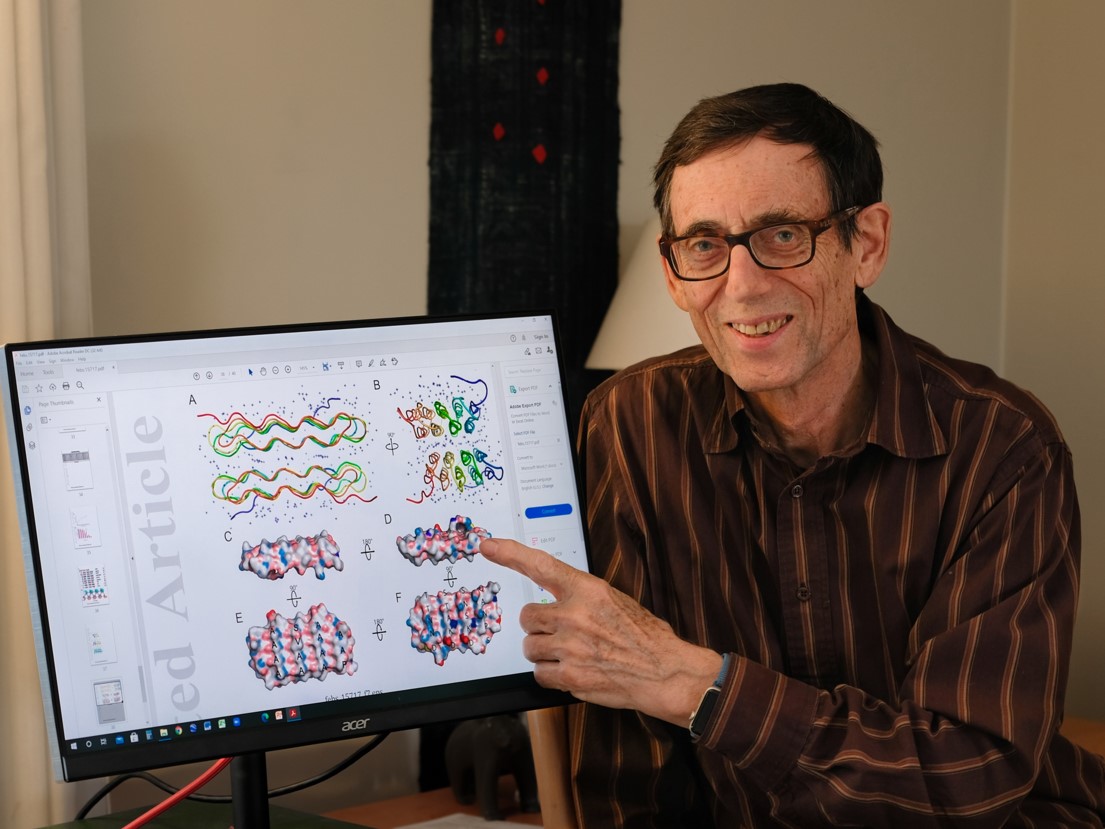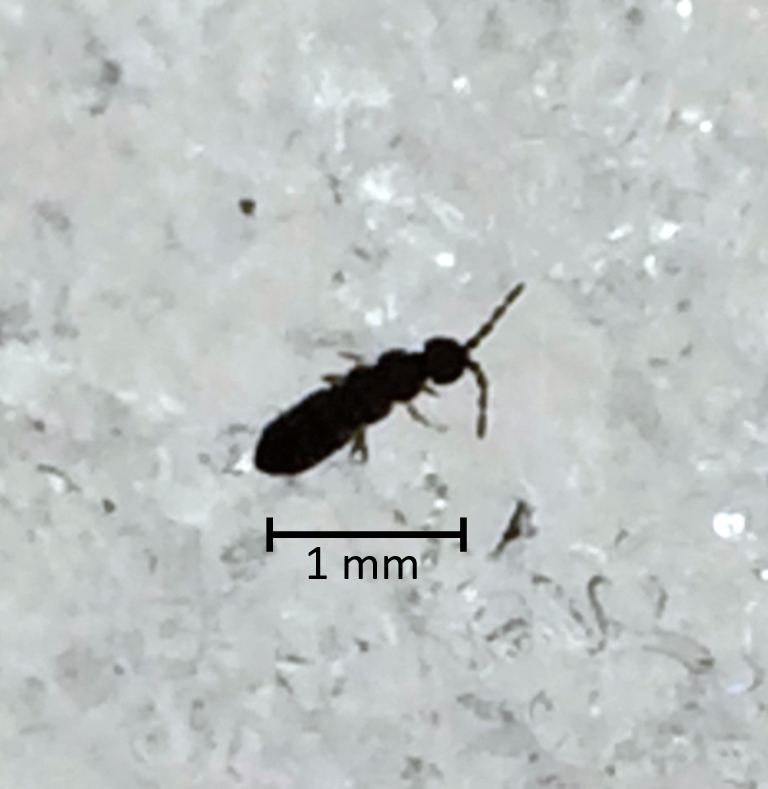Surviving the deep freeze | Video
Fish, carrots and snow fleas rely on a common protein to survive when the temperature drops. Dr. Davies with Queen's University is using the CLS to study these special antifreeze proteins.
By Colleen MacPhersonBanks of a creek covered in frost.
Key proteins protect wildlife when the temperature drops
It is hard to imagine what some fish, carrots and tiny snow fleas might have in common, but it turns out it is something key to their survival when the temperature drops below freezing.
The common trait, also shared by insects, bacteria and other microorganisms, is antifreeze proteins (AFP). As the name suggests, AFPs work “to prevent organisms from freezing or to help them survive in a frozen state,” explained Dr. Peter Davies, a professor at Queen’s University and Canada Research Chair in Protein Engineering.

Davies has been studying these unique proteins for about 40 years. His latest research, aided by X-ray diffraction techniques at the Canadian Light Source (CLS) at the University of Saskatchewan was recently published in The FEBS Journal. This study continues to build knowledge about AFP structures, their function and evolution.
No matter the host, AFPs bind to ice crystals to prevent them from growing and causing damage inside organisms, said Davies. In fish, large ice crystals can block blood vessels; in plants, expanding crystals can burst tissue or cause dehydration by drawing water out of nearby cells.
In addition to describing AFPs, Davies and his colleagues are trying to understand when and why the proteins evolved in various organisms because their shapes pose a mystery. Four AFPs have been identified in fish, “but they have remarkably different structures, so different you wouldn’t think they had the same function.”

The Earth’s climate record suggests AFPs appeared with ice ages, Davies said. “If there’s no ice in the ocean, there would be no reason for fish to have AFP. But about 20 million years ago, the start of the recent ice ages, fish began to evolve these proteins” but independently and on different occasions, which may account for their dissimilar structures.
The Davies research group expected to find a similar variety of AFP structures in their recent study involving springtails, often called snow fleas. These tiny soil-dwelling arthropods feed on microorganisms and decaying matter and can be found around the world, even on top of snow in winter.
“If you go out to the woods in winter and see any insect moving around in sub-zero temperatures, the chances are it has an AFP.”
After describing the structure of AFPs in springtails in Ontario, Davies enlisted a colleague and his spouse to painstakingly collect springtails in winter near Sapporo, Japan. He expected to find a “treasure trove” of new structures, but instead discovered the two were basically the same, suggesting the AFPs evolved during a much earlier ice age “and the springtails simply retained those genes.”
Data collected at the CMCF beamline at the CLS has shed additional light on the AFP binding mechanism. Davies added the CLS facilities “are absolutely essential to get 3-D structures of proteins,” and remote data collection means his group can control robotic crystal analysis processes from lab computers in Kingston. “It’s brilliant.”
Work on identifying and characterizing new AFPs will continue, he said, thanks to funding from the Canadian Institutes of Health Research.
When asked about efforts to engineer AFPs that could benefit other organisms, Davies indicated that potential applications could include giving field crops “enough AFP to protect them from a few degrees of frost. You could plant a bit earlier and keep crops in the field a little bit longer. It means you play chicken with the weather, but there’s real potential to avoid some frost damage.”
Scholl, Connor L., Sakae Tsuda, Laurie A. Graham, and Peter L. Davies. "Crystal waters on the nine polyproline type II helical bundle springtail antifreeze protein from Granisotoma rainieri match the ice lattice." The FEBS Journal (2021). DOI: https://doi.org/10.1111/febs.15717.
To arrange an interview, contact:
Victoria Schramm
Communications Coordinator
Canadian Light Source
306-657-3516
victoria.schramm@lightsource.ca
